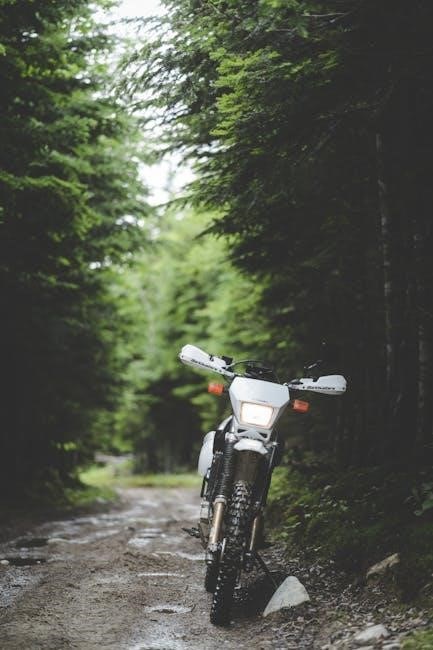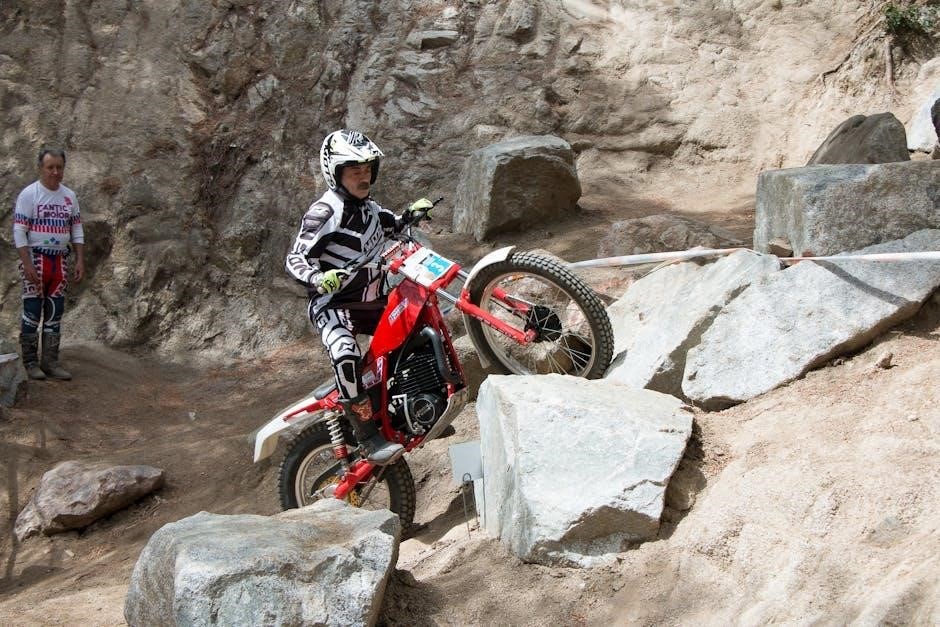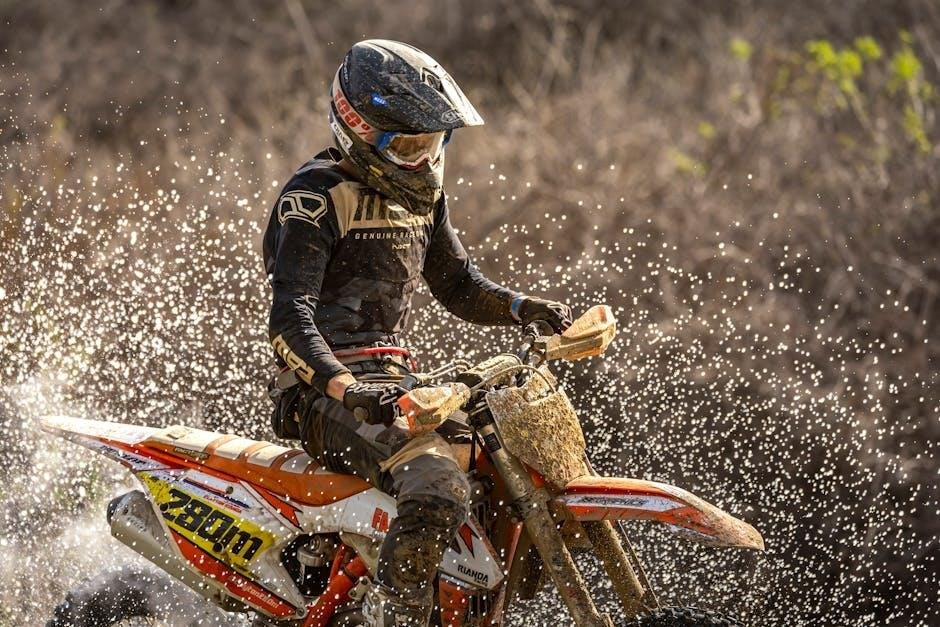
dirt bike size guide
Choosing the right dirt bike size is crucial for a safe and enjoyable ride, with various factors to consider, including height and age, and size charts to help determine the perfect fit always.
Importance of Choosing the Right Size
Choosing the right dirt bike size is essential for a safe and enjoyable riding experience. A dirt bike that is too large or too small can be difficult to handle, leading to a higher risk of accidents and injuries. Proper fitting is crucial to ensure that the rider can control the bike with ease and confidence. The right size dirt bike will also help to prevent fatigue and discomfort, allowing the rider to focus on the ride and enjoy the experience. With the various factors to consider, including height and age, it is important to take the time to find the perfect fit. By doing so, riders can maximize their comfort, performance, and overall riding experience, and get the most out of their dirt bike. The importance of choosing the right! size cannot be overstated, as it plays a critical role in determining the success and enjoyment of the ride.

Understanding Dirt Bike Size Charts
Size charts help determine the perfect fit, with measurements and guidelines to ensure a safe and enjoyable ride always using correct data.
Measuring for the Correct Fit
To ensure a correct fit, it is essential to take accurate measurements, including inseam, height, and weight, using a measuring tape or a ruler to get the exact numbers.
The measurements should be compared to the size charts provided by the manufacturer to determine the perfect fit.
It is also crucial to consider the type of riding and the terrain, as this can affect the fit and comfort of the dirt bike.
Additionally, the rider’s skill level and experience should be taken into account, as this can impact the choice of dirt bike size.
By carefully measuring and considering these factors, riders can find the perfect fit and enjoy a safe and enjoyable riding experience.
The correct fit is vital for comfort, performance, and safety, and should not be compromised.
Riders should always prioritize a correct fit when selecting a dirt bike, and seek advice from experts if needed.
This will ensure a fun and safe riding experience, and help to prevent accidents.

Factors to Consider When Selecting a Dirt Bike
Considerations include rider experience and riding style when selecting a dirt bike always matters.
Age and Height of the Rider
The age and height of the rider are crucial factors in determining the right dirt bike size, with different bikes suited to different age groups and heights, and size charts available to help with this decision.
A rider’s height and age will affect their ability to control the bike, with younger and shorter riders requiring smaller bikes with lower seat heights and less powerful engines.
For example, a rider under 5 feet tall and 10 years of age will require a dirt bike with an engine size under 110cc, while taller and older riders can handle more powerful bikes.
The height and age of the rider will also affect the type of transmission required, with automatic transmissions often preferred for younger riders.
Rider height and age are key considerations when choosing a dirt bike, and size charts can help riders find the perfect bike for their needs.
By considering these factors, riders can ensure a safe and enjoyable riding experience.
Dirt Bike Size Options for Kids
Kids have various dirt bike size options, including bikes with smaller engine sizes and lower seat heights, suitable for young riders, with size charts available to determine the perfect fit always.
Engine Size and Transmission Type
When it comes to choosing a dirt bike, engine size and transmission type are crucial factors to consider. The engine size will determine the power and speed of the bike, while the transmission type will affect the ease of use and control. For younger riders, a smaller engine size, such as 50cc or 110cc, is often recommended, as it provides a more manageable power output. Additionally, an automatic transmission can be beneficial for new riders, as it eliminates the need to manually shift gears. On the other hand, more experienced riders may prefer a larger engine size, such as 250cc or 450cc, and a manual transmission, which provides more control and precision. By considering these factors, riders can choose a dirt bike that meets their needs and skill level, and provides a safe and enjoyable riding experience. Various online resources provide detailed information on engine sizes and transmission types.
Additional Considerations for Dirt Bike Sizing
Other factors include suspension, seat height, and ground clearance to ensure a safe and comfortable ride always.
Importance of Proper Fitting Gear
Proper fitting gear is essential for a safe and enjoyable dirt bike ride, as it provides protection and comfort for the rider. The gear should fit snugly, but not too tightly, allowing for a full range of motion. A well-fitting helmet is particularly important, as it can help prevent head injuries in the event of a crash. Additionally, gloves and boots should fit properly to provide protection for the hands and feet. Wearing gear that fits properly can also help improve the rider’s performance, as it can provide a sense of security and confidence. Furthermore, proper fitting gear can help prevent distractions and discomfort during the ride, allowing the rider to focus on the terrain and enjoy the experience. By wearing gear that fits properly, riders can help ensure a safe and enjoyable dirt bike ride. Proper fitting gear is a crucial aspect of dirt bike riding.



Leave a Reply
You must be logged in to post a comment.